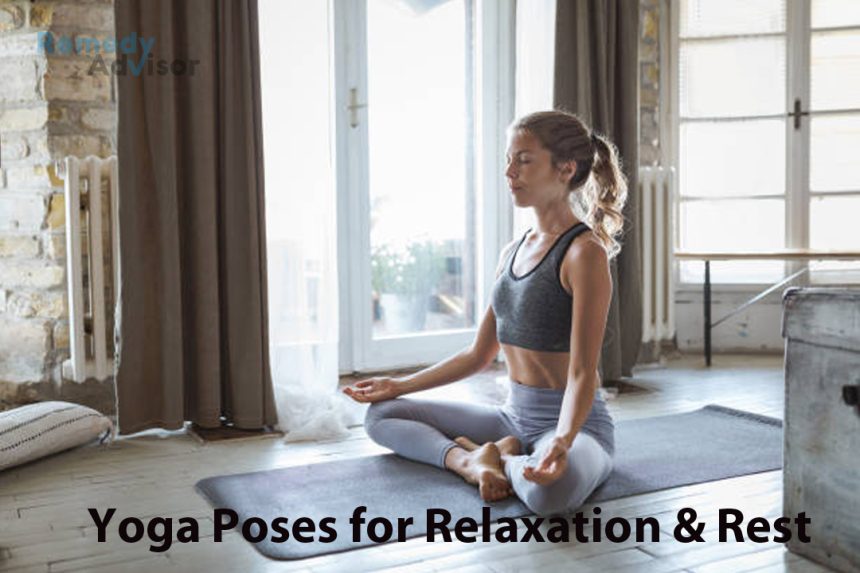If you’re chronically anxious or simply feel “stressed out,” consider giving yoga a try. This 5,000-year-old system of exercise, breathing and meditation is wonderfully effective at clearing the mind and easing muscular tension.
It also fosters a profound sense of self-confidence a feeling that you can handle whatever comes your way.
Basic yoga program
A basic program takes about 20 minutes each day. Some people prefer doing yoga in the morning. Others prefer early evening. Either way is okay. Just make sure you do it at the same time of day every day.
The only “equipment” you’ll need is a quiet room, loose, comfortable clothing and a blanket, large towel or another pad on which to sit comfortably.
Yoga breathing
To help focus your attention inward, start with two minutes of “complete breath” exercises.
Sit cross-legged on a firm cushion on the floor, or find another seated position in which your back is straight but relaxed.
Begin inhaling slowly and deeply through the nose. Relax your belly so that it expands with each incoming breath, and let your chest and rib cage expands. At the very “top” of each inhalation, your shoulders will lift slightly. At this point, exhale by relaxing your shoulders and then your ribs. Then tighten your belly to squeeze the air out. Relax and repeat.
Important: When we breathe ordinarily, each inhalation lasts longer than each exhalation. With yoga breathing, inhalation and exhalation should take the same amount of time.
Breathe in for a count of five then out for a count of five until you’ve established a rhythm. Then focus on the sound of your breath.
Arm and shoulder stretches
These three stretches each done while standing loosens the joints and ease muscular tension.
• Arm roll
Hold your arms out to the side, elbows straight, hands held up as if stopping traffic. Rotate your arms forward in three large circles, then backward in three large circles. Then do three small circles in each direction.
• Head roll
With arms at your sides, bend your head forward while relaxing the muscles in the back of your neck. Slowly tilt your head to one side, then back, then to the other side, then to the front. Do this head rotation three times clockwise, then three times counterclockwise.
• Side stretch
Keep your feet slightly more than shoulder-width apart, with arms held out to the side. Inhale deeply. Then exhale as you bend to the right. Slide your right hand down your right thigh toward the knee, and bring your left arm overhead. Breathe in, and return to an upright position.
Do the same stretch on your left side. Repeat three times on each side.
Spine stretches
These poses are especially beneficial if you work at a desk.
• Sun pose
Stand with feet together. As you inhale, raise your arms from the side until they’re overhead. Look upward. Exhale as you bend from the waist. Reach as far forward as you comfortably can, and grasp your ankles, calves or knees.
Hold for a moment, then inhale as you return to an upright position, raising arms to the side until they’re overhead. Lower arms in a circle as you exhale. Repeat twice.
• Baby pose
Sit on your feet. Slowly bend forward until your head approaches the floor. Let your arms rest at your sides with elbows bent. Hold for at least one minute.
• Corpse pose
Lie on your back with feet slightly apart and arms at sides, palms up. Close your eyes. Relax your entire body, paying particular attention to the face and stomach. Rest for at least one minute.
Yoga meditation
Meditation teaches us to observe rather than worry about or act upon the thoughts that constantly flit through our minds.
This lets us withdraw from the never-ending bombardment of desires, fears, regrets, etc. and find peace by turning our attention solely to the present moment. Start by lying face up on your pad, with arms at sides, palms up. Remain as still as possible.
For the next two minutes or so, focus on each part of your body in turn. Envision each part separately and relax it.
Start with your forehead, then your eyes, face, neck and shoulders. Move down your body, relaxing each in turn arms and hands, chest and abdomen, hips, legs and feet and then back up the spine to the neck and head.
Gently bring your attention to your forehead. Silently repeat “om” several times. Your aim is to think of nothing. If thoughts intrude, don’t worry and don’t try to force them to stop. Gently return your attention to the experience of silence.
Trap: The more you fight to control your thoughts, the harder your thoughts will resist you. Instead, just observe the thoughts as if they were passing by in the distance.
After meditating for 10 minutes or so, open your eyes. Wiggle your fingers and toes, open and close your fists. Take a deep breath. Stretch your arms and legs. Your yoga session is over.
As you become more skilled at meditation, you should be able to remember and reproduce the feeling at will to achieve instant relaxation anytime, anywhere.







